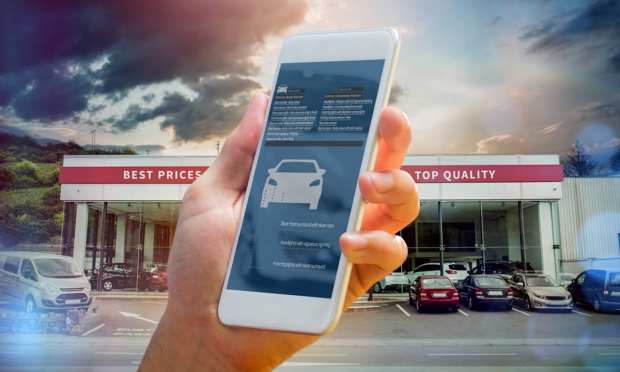Driving Digital: Four Auto Sales Trends To Watch In 2021

If the massive and diverse U.S. auto industry was a car, you could say its ride on “route 2020” was a bumpy one, with lots of blind spots and detours that led to a fairly comfortable downhill finish, which then ran smack into a crazy roundabout called highway 2021. Although full-year vehicle sales collectively were down, the short-term fourth quarter and December results tell a completely different story, as do the different pockets of problems and prosperity within them.
While it makes sense to look at the industry as a whole, the most telling trends are revealed when broken down into parts, which is exactly what we’ve done with these four key areas of automotive focus that you should watch as we roll into the new year.
New Vs. Used
The push-and-pull between consumers’ preference for new or used cars is set to continue this year, and will again be influenced by a number of external factors that impact pricing.
Whereas last spring’s auto manufacturing shutdowns led to tight new vehicle supplies as well as decreasing incentives, that also gave used cars the lift they needed to take the lead. But like all good car races, the jockeying that is required to hang onto the lead is never easy, and the used car market quickly saw its price advantage erode as a surge of new demand — particularly from online buyers — brought scarcity and inflation to the secondhand segment.
Other unprecedented pandemic-linked trends also tilted the scale in favor of used cars last year, such as the shift away from public transportation and a flight to the suburbs. However, the biggest force in the car replacement cycle — wear and tear — took a major downshift thanks to a surge in the number of people working from home and not commuting.
“The U.S. market is now estimated to see sales finish around $14.5 million, a much stronger result than the $13 million range that some analysts forecasted earlier this year,” Car and Driver reports, noting the overall decline of about 15 percent would mark the lowest sales levels seen since 2012.
While there is long-term hope on the coronavirus vaccine front, the economy is still fragile and the recovery uncertain, especially given the short-term prospects for additional lockdowns. As a result, macro trends will continue to dominate vehicle demand for at least the first few months of this year.
Think Big
Whether it’s new or used vehicle sales, long- or short-term results, the unwavering demand for large pickup trucks and SUVs by U.S. consumers continues to be the industry’s white knight.
While that is great for the manufacturers’ bottom lines, and will likely continue as long as gasoline prices remain low, the big-is-better trend is not without its vulnerabilities.
“While feasting for years on profits from expensive SUVs and trucks, many automakers have forfeited the lower end of the market at precisely the time that many COVID-wary consumers are looking for an affordable alternative to public transportation,” Axios reports.
Large trucks and SUVs also drive up the average selling price, as well as down payments and average monthly payments, which of course brings affordability into play.
“It might seem at odds with unemployment levels and the harsh financial conditions that so many Americans are finding themselves in right now, but the consumers who are buying new cars during the pandemic are clearly on the other side of the economic divide,” said Jessica Caldwell, Edmunds’ executive director of insights. “They’re likely qualifying for the lowest promotional rates and feeling secure enough to put down more money to get the bigger vehicles and features that they want,” she added.
Edmunds said the average down payment for a new vehicle rose about 10 percent to $4,734 in the fourth quarter from a year ago, with the average monthly payment now reaching $581.
Luxury sales are also a pocket of strength, including Bentley, which just reported its highest annual total sales ever of 11,206 vehicles.
The Digital Shift
If there’s one thing that dealers, manufacturers and industry analysts agree on, it’s that no matter what the economy does, an increasing proportion of vehicle sales will be done online.
While the digital shift accelerated in 2020, it is set to continue to revolutionize the way cars and trucks are bought, sold and financed this year.
“Customers love the idea of having 15,000 cars in their pocket without having to go from one dealership to another in search of what they want,” said Paul Hennessy, CEO of Vroom, which went public in June.
And if customers love it, dealers will want to have it. According to Aaron Krane, CEO of digital auto platform Modal, dealers have seen the digital future – and they accept it.
“You don’t sell a car in 2020; the customer buys it,” Krane said in a recent chat with PYMNTS. “Because dealers haven’t been given adequate online tools to empower their customers and drive the deal, dealers still have to try to sell, and that’s just not the modern way of operating a retail business – and dealers get this.”
And so do manufacturers, such as Nissan, which just launched “Nissan@Home” to fully digitize the car-buying experience.
“Nissan@Home gives customers what they’re asking for – the ability to purchase a vehicle on their terms,” said Dan Mohnke, vice president of eCommerce. “Through this new program, Nissan dealers can provide a better customer experience which can, in turn, help improve their own business performance. It’s an important first for Nissan, and a great value to our customers.”
The EV/AV Frontier
As much as Tesla continues to enjoy record sales and long-sought (albeit narrow) profitability, the electric and autonomous vehicle (EV/AV) segment is set to see more action and adaptation this year.
On the new entrant front, expect to hear continued whispers about Apple coming to market with its so-called “iCar,” after reports last month suggested the cash-rich device-maker was kicking its long-stalled car project into high gear.
Existing nameplates are also expected to continue to transition more of their fleets toward electric-powered vehicles, especially since the era of environmental laxity and clean air regulation rollbacks of the past four years is coming to an end.
While consumers are proving to be increasingly comfortable with EVs, and the manufacturers are producing all manner of models and sizes, not all dealers are on board with the trend, at least if it requires them to spend extra money to do what they’re already doing.
Case in point: As much as one-third of Cadillac and Buick dealers have balked at the cost of GM’s efforts to display and sell its EV models in suitably contemporary showrooms.
“They do not believe that all of a sudden when the factory comes out with a new car or a new line of cars that they should have to sign a separate agreement,” North Carolina Automotive Dealer Association President Bob Glaser explained. “If I’m a Buick dealer, I should be able to sell all Buicks.”
